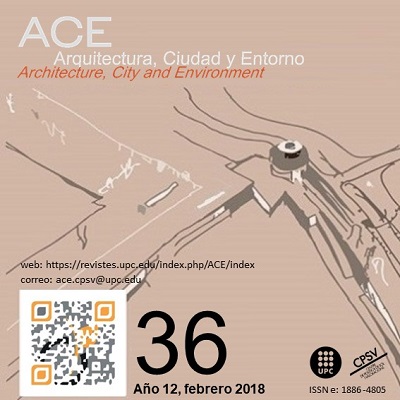The role of the landscape elements to improve the urban spaces environmental performance
DOI:
https://doi.org/10.5821/ace.12.36.4851Keywords:
Sustainability, surface temperature, mean radiant temperature (MRT), thermal comfort, predicted mean vote (PMV)Abstract
Objectives
The absence of environmentally compatible designs for urban spaces that consider the high-density usages is the most important urban problem under discussion. Attaining the thermal comfort for users of the urban spaces directly affects the usage efficiency and improves the quality of life for the residents. This research aims to improve the performance of urban spaces specially the environmental performance by using the various landscape elements to achieve the thermal comfort for its users.
Methodology
The methodology for achieving the goals can be represented via a theoretical part which spots the various performances of the landscape elements, and an analytical part in which, the Tanta Medical Campus is selected as a case study. A development proposal for the urban design of its urban spaces is presented by focusing on the environmental performance to achieve thermal comfort for users and thus to attain satisfaction within the space. Then an evaluation of the effect of the proposed design, to achieve the best environmental performance of the urban spaces, is done by the use of environmental simulation software “ENVI-MET”.
Results
This research outlines the results that prove the role of the landscape elements in enhancing the environmental performance such as decreasing air temperature, reducing MRT and reducing surface temperature. The thermal satisfaction for the users, as measured using PMV, has been improved during the daylight hours. The MRT under the shaded areas is reduced due to the proposed development.
Originality
This paper introduces the redesign of the medical campus at Tanta University by using the various landscape elements considering the functional, Social, environmental and aesthetical needs. By using simulation, tool “ENVI-MET” to evaluate the environmental effect of the proposed design, which confirms the distinguished effect of the landscape elements especially the vegetation to achieve the thermal comfort for campus users.
Published
Issue
Section
License
| INTELECTUAL PROTECTION CRITERIA |
At this moment, it is count with the "Oficina Española de Patentes y Marcas", while global protection it is being processed by the World Intelectual Property Organization (OMPI/WIPO). Nevertheless the International Standard Serial Number Office (ISSN) has given the following numbers ISSN: 1886-4805 (electronic version) and 1887-7052 (paper version). All articles will be peer reviewed, using double blind reviewing. |
| COPYRIGHT |
The article contents and their comments are authors exclusive liability, and do not reflect necessarily the journal editor commitee's opinion. All ACE published works are subject to the following licence CC BY-NC-ND 3.0 ES http://creativecommons.org/licenses/by-nc-nd/3.0/es/ It implies that authors do not hold nor retain the copyright without restrictions but only those included in the licence. |


































